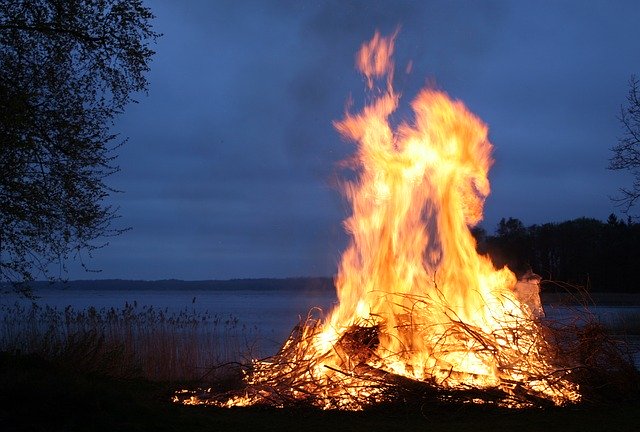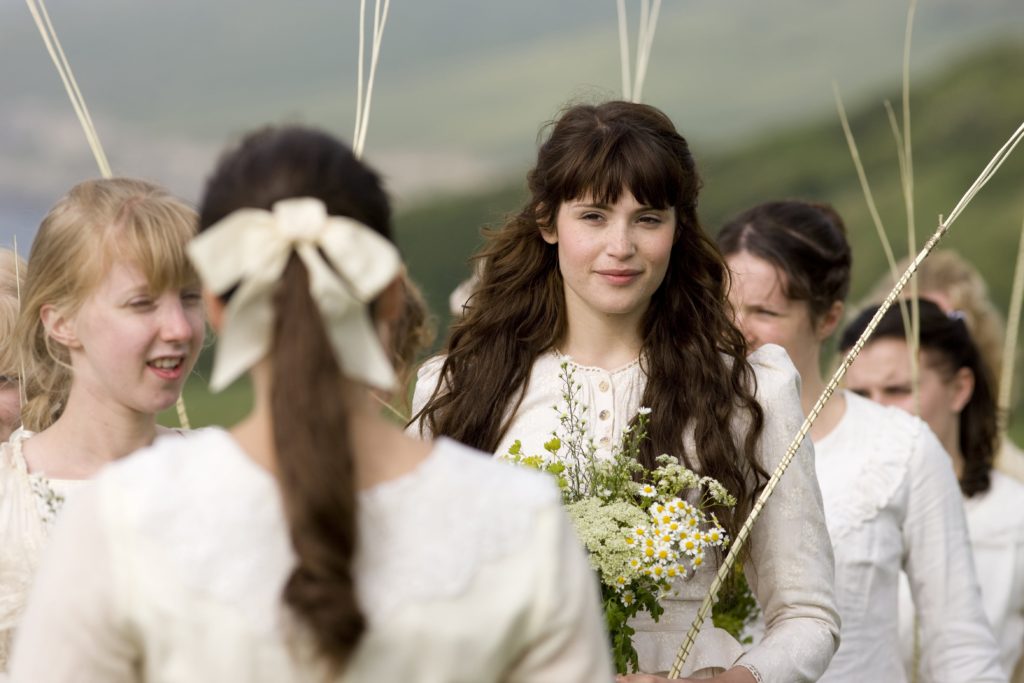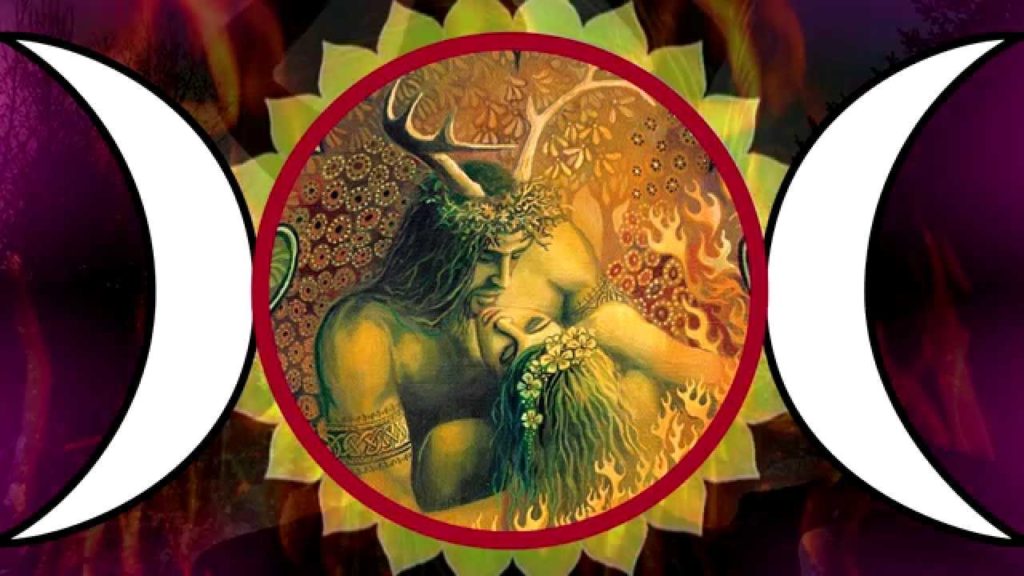Beltane is definitely a magical time of year. Landing in May, the promise of summer can be felt but the crisp cool air of spring still lingers.
The sun starts to become stronger and brighter and blesses the day with more of its presence. A subtle excitement and anticipation for long summer nights, along with the light and joy this season brings is strongly felt by all.
What is Beltane?
It is at this time that the ancient Celtic festival of Beltane is celebrated which marks the opening of summer on the 1st May. Like Samhain and Imbolc, it is one of the cross-quarter days and lands between the Spring Equinox and Summer Solstice. It originated in ancient Gaelic Ireland but the celebrations also spread to Scotland and the Isle of Man.
In more recent centuries it has become known as May Day and has become associated with customs such as dancing around the Maypole and crowing the May Queen. However, interestingly, these customs have actually nothing to do with the original Beltane festival that was celebrated in ancient times.
The Origins of Beltane the Fire Festival
The original festival of Beltane was about blessing and protecting the cattle as they were moved up to the summer pastures. The cattle were made to walk through two protective fires that would bless the cattle and protect them from the feared aos si (fairies).
Cows were also made to leap over lighted straw or wood to prevent their milk from being stolen by the fairies whilst rowan branches were hung over milking equipment for the same effect. Rowan branches were also hung over doorways, cows and the hearth.
Not only this, the fire was used to bring luck as well as protection. The fire was thought to bring good fortune and bless those who jumped over it and as such, it was a common custom at Beltane for couples, young men and even pregnant women to leap over some of the embers of the fire. The rest of the embers were then sprinkled by the sprouting crops in order to protect them and ensure a good yield for harvest time.

What is the Definition of Beltane?
Significantly, the name Beltane is possibly thought to have been associated with a deity that may or not have been worshipped during the festival. Ronald Hutton explains that some attribute the name to the Northern deity Belanus and or to the god Bel (Bil or Bial) which according to the Sanas Chormaic (an early medieval Irish glossary) “a fire was kindled in his name at the beginning of summer always”.
However, this is not exactly agreed by historians as there is not enough evidence to support this theory. Hutton also points out that the preface ‘bel’ meant ‘bright’ or ‘fortunate’, which corresponds exactly with the rituals and essence of Beltane, giving us another possible origin to its name.
Like Samhain, (which is celebrated exactly the other side of the year) the veil is thought to be at its thinnest during this time. This was thought to mean that spirits from the Otherworld could easily cross into our reality during Beltane. It was also perceived as a time for heightened magic and extraordinary events.
From Beltane to May Day
As the original festival of Beltane became forgotten, a new tradition took its place – the tradition ‘bringing in of May’, ‘Maying’ or as we know it, May Day. This more recent tradition had many of the same customs and celebratory aspects as Beltane but as time had moved on, new games had been added to its celebrations.
Traditions such as a decorating a maypole became popular, which of course later evolved into dancing around the maypole using long coloured ribbons that would entwine around it. However, ribbons were a much later addition to this custom and were not seen before the 19th century. The maypole that was common during medieval and the early modern period was a wooden pole decorated with flowers, painted and had flags draped from it. The pole was the centre and focus of the May celebrations where whole communities would come together to erect it.

Other important aspects of May celebrations were decorating homes and churches with freshly grown flowers. Flower garlands were also made at this time and have become a well established symbol of May Day traditions. It was, in fact, common for young women to sell flower garlands to make extra money.
In a similar fashion to the May Pole, a May doll would also be made and decorated with flowers. This would be carried around in a procession. This may be linked to the tradition of crowning a May Queen – a young girl who was dressed in white and presented as the personification of purity.
What comes to mind is the image of Tess in Tess of the D’urbervilles (a novel written by Thomas Hardy in 1891) doing a May dance with her fellow maidens, all dressed in white.

May Day: Misrule and Sexual Encounters
The celebrations of May were vehemently criticised by more conservative and puritanical factions of society during the 16th, 17th and 18th centuries, arguing that the search for greenery and flowers in nearby woods gave rise to sexual misconduct. One puritanical writer claims that “Ten maidens who went to set May and nine of them came home with a child”. Obviously, a hysterical view but it becomes clear that there was a perception about the beginning of May being a time of heightened sexuality.
Not just this, but the feasting and merry-making of the 1st May were considered frivolous and linked to both drunkenness and disorder. And indeed, there does seem to be some sort of suspension of order over May Day as it was common for youths to play tricks and misbehave. As Ronald Hutton explains: “It was a day of licensed misrule”.
Beltane and Neo-Paganism
For Neopagans, Beltane has become something more than just a fire festival or a day to play games, it is about the fertility of the land and welcoming the beginning of summer. Nature will soon enter its peak and the Mother Goddess will rule the land once again.

Some have even said that the May Queen represents the young maiden who on May eve makes love to ‘Jack in the Green’ or also known as the Green Man whereby they conceive a child together. The May Queen then becomes the Mother Goddess and is a maiden no more.
How Can We Celebrate Beltane?
Every time the cross-quarter days arrive, whether it be Samhain, Imbolc or like in this instance, Beltane, I am always able to sense the sudden turn of the season. For me, it is almost tangible.
Today I was sitting in my garden, listening to the birds tweeting and feeling the warm energies of summer arriving. I realised that every time I have written an article about the cross-quarter days, I have felt more connected to nature. I have paid more attention to the cycles that nature goes through and have seen how the energies of each of these seasons are reflected in my own life.
For example, I realised that I always seem to undergo some deep spiritual awakening at this time. My big spiritual awakening actually happened around this time 8 years ago and even last year around this time I had another big rebirth. I can’t help but feel that it is somehow connected to the transition that nature goes through.
I think whenever we consider celebrating any of these ancient Celtic festivals it is important to really look at what is happening in the natural world and try and incorporate those themes into how we choose to celebrate this time.
For me, Beltane seems to be all about nature coming into full bloom. The maiden goddess has reached her fullness and is ready to transition into her aspect as the mother goddess. This is a time of sexuality and conception in nature as the land begins to turn green again.
In the same way that Imbolc was a time to plant seeds and start new projects as spring returned, Beltane is the time to take action upon those projects and bring them to fruition.
Some ideas for celebrating Beltane are:
- Connect with nature – Do a meditation in nature to connect with the energies of this time. Enjoy the warmth of the sun and the sweet smell of flowers starting to bloom.
- Create a fire to cleanse and protect – Summer is a joyous season so burn away what no longer serves you (in a safe way of course!) to make room for the love and joy of this season. You can also use this fire for a protection ritual or anything you want to manifest in your life as well.
- Call upon the fairies and nature spirits – The veil is at its thinnest during this time so it could be a great time to connect with the elemental realm and receive any wisdom from them. Maybe you can also make an offering for them. Tess Whitehurst has some wonderful ideas for celebrating Beltane as well.
- Make flower garlands or decorations – You could make a crown of flowers or perhaps decorate your home with them.
- Spend time with friends and loved ones – Beltane and May Day is also a celebration of life and summer. What better way to celebrate the beginning of summer than to spend time outdoors with those who bring joy and happiness to your life.
Earth’s Natural Cycles Deserve Our Attention
For the ancient Celts, winter would have been well and truly over at Beltane. The dark half of the year had now passed and nature was about to bloom in all her glory. For me, this is the essence of Beltane and I think this what we should be celebrating at this time.
Our Earth is so beautiful and her natural cycles deserve our attention. So for Beltane, I will be spending time in nature, celebrating the beginning of summer and absorbing all these beautiful energies of new life that our Earth gifts us with at this point in the Wheel of the Year.


You’ve captured the essence of Beltane beautifully. Great piece.
Comments are closed.